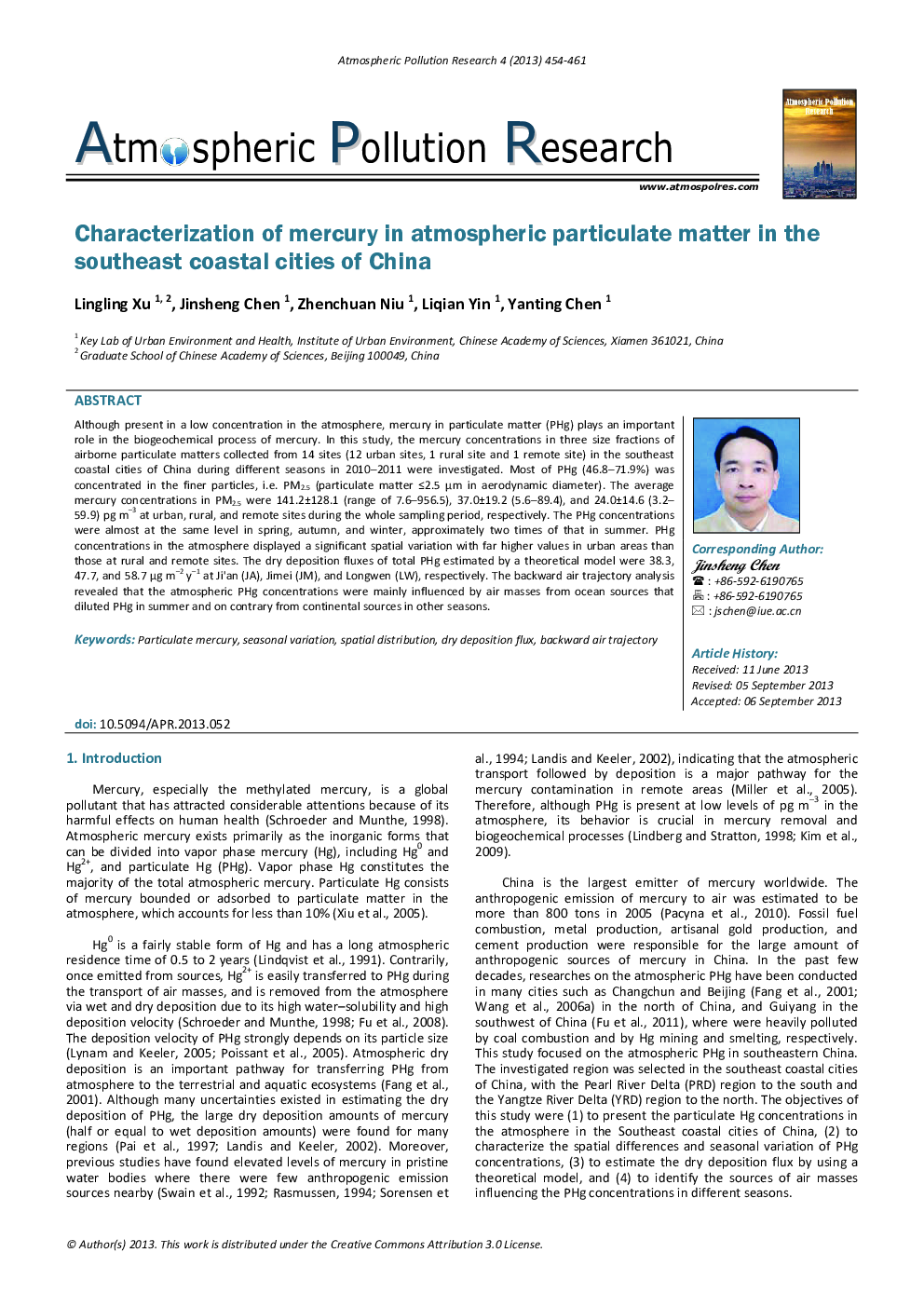| Article ID | Journal | Published Year | Pages | File Type |
|---|---|---|---|---|
| 4434594 | Atmospheric Pollution Research | 2013 | 8 Pages |
Although present in a low concentration in the atmosphere, mercury in particulate matter (PHg) plays an important role in the biogeochemical process of mercury. In this study, the mercury concentrations in three size fractions of airborne particulate matters collected from 14 sites (12 urban sites, 1 rural site and 1 remote site) in the southeast coastal cities of China during different seasons in 2010–2011 were investigated. Most of PHg (46.8–71.9%) was concentrated in the finer particles, i.e. PM2.5 (particulate matter ≤2.5 µm in aerodynamic diameter). The average mercury concentrations in PM2.5 were 141.2±128.1 (range of 7.6–956.5), 37.0±19.2 (5.6–89.4), and 24.0±14.6 (3.2– 59.9) pg m–3 at urban, rural, and remote sites during the whole sampling period, respectively. The PHg concentrations were almost at the same level in spring, autumn, and winter, approximately two times of that in summer. PHg concentrations in the atmosphere displayed a significant spatial variation with far higher values in urban areas than those at rural and remote sites. The dry deposition fluxes of total PHg estimated by a theoretical model were 38.3, 47.7, and 58.7 µg m–2 y–1 at Ji’an (JA), Jimei (JM), and Longwen (LW), respectively. The backward air trajectory analysis revealed that the atmospheric PHg concentrations were mainly influenced by air masses from ocean sources that diluted PHg in summer and on contrary from continental sources in other seasons.
